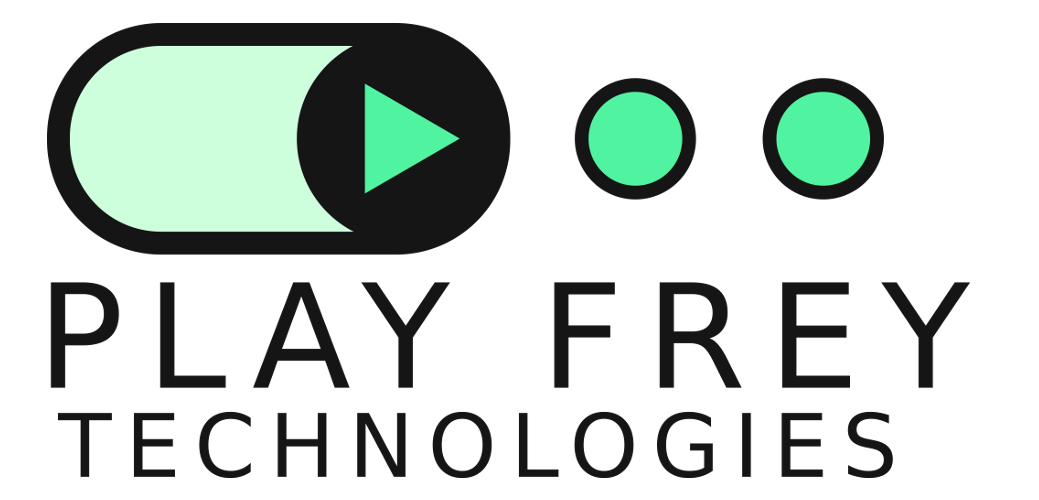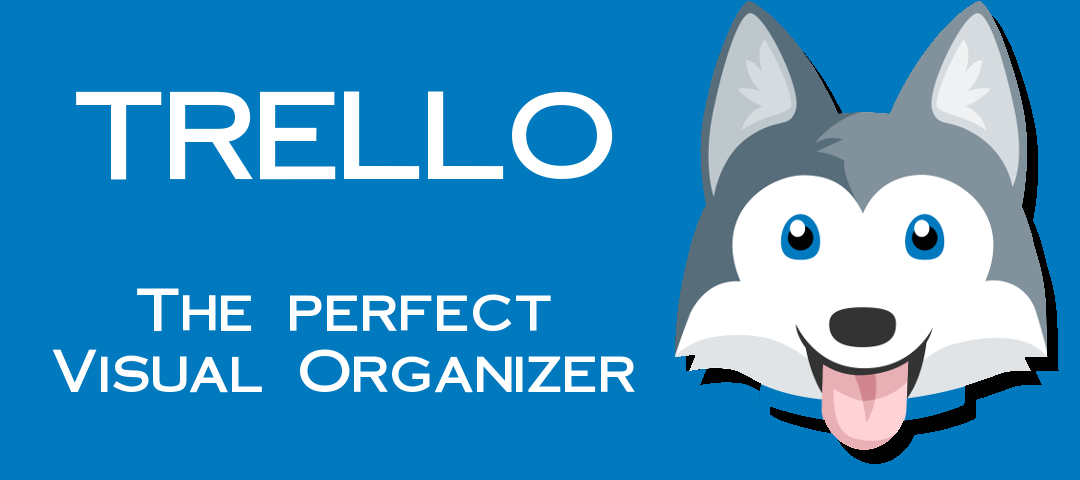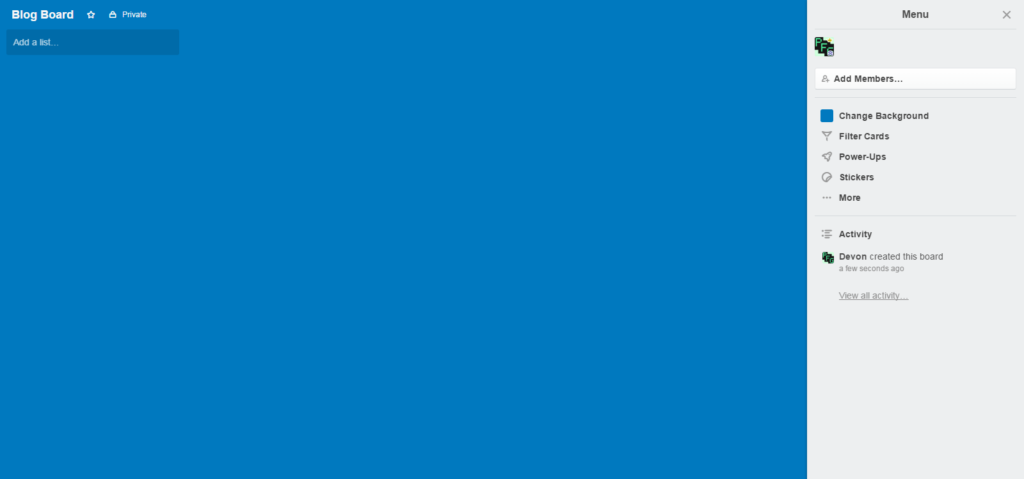Updated May 4, 2022.
As business owners and entrepreneurs, there is always a multitude of ideas rolling around your noggin.
One of the problems with our brains however is that while creating ideas can be relatively simple, holding onto or tracking them can prove to be a challenge. Not unlike feathers in the wind, they just float away the moment you look at your coffee mug.
Trello can help solve this problem plus many others.
So simple, it’s dumb
If you were so inclined to make an account, you might get a board going and end up with something like this.
A blue screen with a couple of options on the right and a darker shade box with the words “Add a list…” at the top left. Click on that and you are offered to enter a name and click save. I’m going to do this and make a list called “Ideas” because this board from its title would be great for tracking blog posts I’m wanting to write.
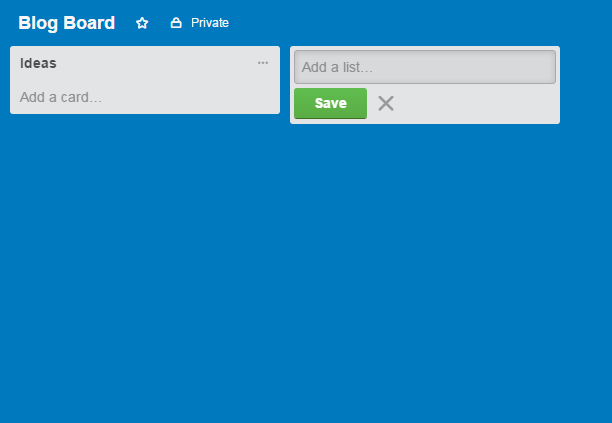
And there we go, I now have a list called “Ideas” while still being able to add another list if I desired. However, though there is now the “Add a card…” item under my new list. Click on that and you will find, very similar to making the list, you can type a name and click “Add”. I’m going to create a card called “Write about Trello,” because this is one of my ideas for my blog.
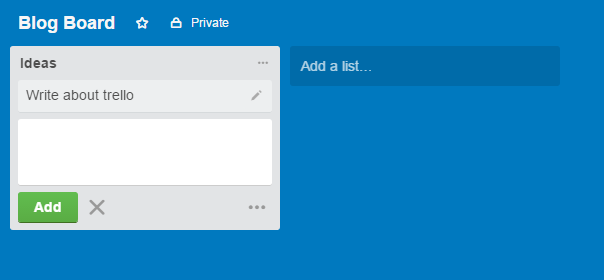
Now there is what’s called a “Card” sitting on that list. We can now click on that card and pull up this window.
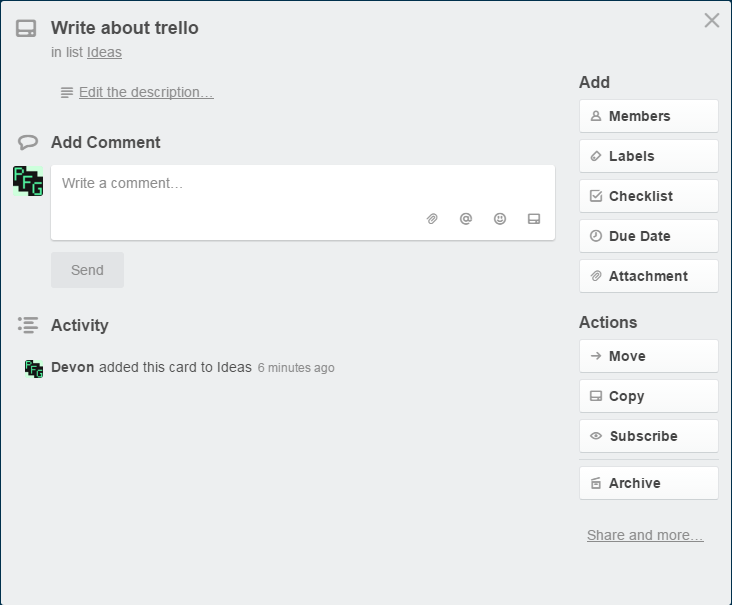
Under “Edit the description…” you can write out all the details you want about your idea. On the right-hand side, there are also a lot of options to help you even more with expanding it.
And that my friend is the absolute basics of Trello. When you start making more lists on a board you can actually drag and drop cards between lists, which makes it a great way of organizing and tracking tasks, ideas, or even jobs through a pipeline.
Strength through Simplicity
This is at the core of what Trello does. You can make lists, add cards to them and move them around. It may seem like it’s so little, but it’s this simplicity that, with a little creative flair, you can use it for just about anything, professionally or privately.
Here are just a couple of examples of what others have used Trello.
The sky’s the limit on what you can do with this little system. Reading over the examples I’m sure you can come up with all sorts of creative ways for this tool to help you.
For me and my business, it’s my bread and butter for maintaining my client projects. In fact, using Zapier and my knowledge of programming I have greatly expanded what Trello is capable of.
For example, everyone is automatically updated as tasks move down the pipeline. I’ve also got Trello hooked into my billing which automatically updates account balances accordingly.
This is, of course, very powerful, and proves to be an invaluable collaboration tool for myself and the people I work with.
Collaboration Features
I feel it’s very important that I present this other amazing strength within Trello, and that is the ability to invite other people to your boards for collaboration.
Using this you and your team can track and assign tasks, organize ideas, communicate and collaborate while keeping it all relevant information contained with relevant tasks.
How many of us have completely flooded inboxes? What percentage of these emails would you say are conversations between yourself and your coworkers/employees? 5%? 15%? 50%?
What’s wonderful, is that with properly implemented Trello boards, you can completely cut these internal communications from your email. Even better is that all conversations will be relevant to a particular task or item. It is also good that you know that everyone is looking at the exact same information.
A fine example would be a design firm that routinely designs logos, signs, or other printable items. That design must go through a process, sometimes a very complex one. First, a client description needs to be gathered, then an initial draft, then internal approval, client approval, printing, and completion.
What’s great is that this can all be managed by Trello.
Make a board called “Design: Client Name” with the lists “Discussion,” “Drafting,” “Approved,” and “Completed.” A single card represents a single design, attaching images and sharing the card with the client ( the client doesn’t have to have an account to see it ). Attach all relevant images, documentation, and discussion to the card as you push it through the pipeline.
Then once completed, you have a card packed full of information on that job where it can sit forever with all that valuable information on it.
In Closing
Personally, Trello has enhanced my life in more ways than I can count. I use it to track personal and client projects, track my accounting, my incoming/outgoing checks, and allows me to collaborate with people around the world. This piece of software is a beautiful thing, and I think more people should be using it.
You can sign up for an account for free, although there does exist a paid version with some extra bells and whistles that you might find useful such as stickers and a calendar for cards with due dates.
That’s about it, thank you for reading! Take some time and have some fun with this!
